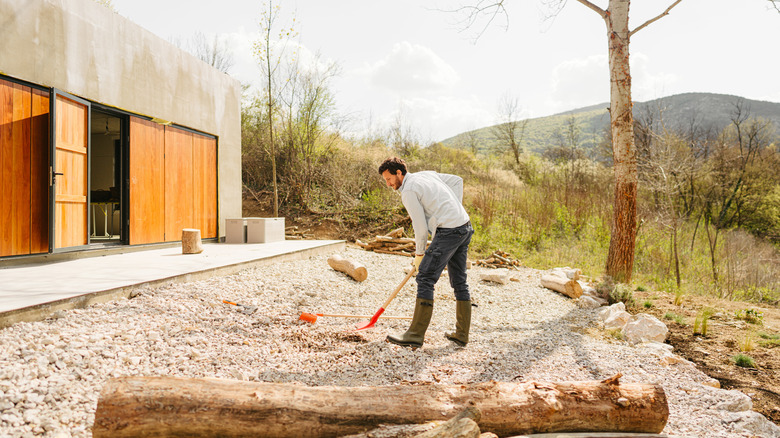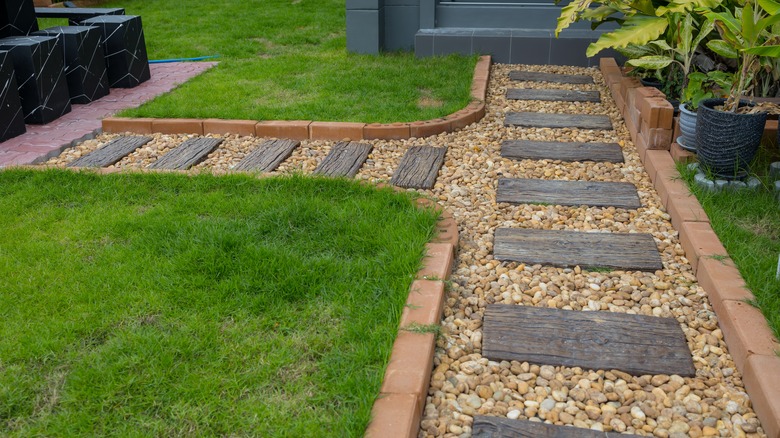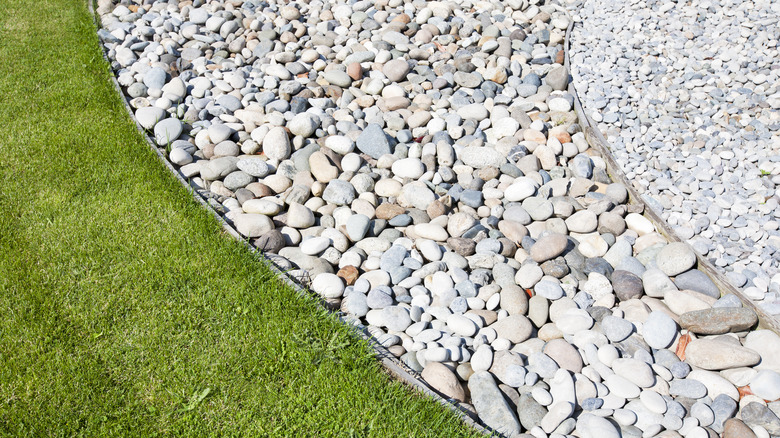How To Clean Your Landscaping Rocks To Keep Them Looking Their Best
Landscaping rocks, whether they serve as a focal point or simply an accent, can significantly enhance the aesthetic appeal of your garden. Over time, however, these landscaping rocks can accumulate dirt, moss, or mildew, causing them to lose their original luster and appeal. Fear not, as maintaining the beauty of your landscaping is entirely possible with regular cleaning. This process involves removing debris and giving the rocks a good scrub. Done correctly, this can restore the natural coloring, allowing them to shine as integral parts of your garden.
You can try using a simple cleaning solution of mild dish soap and warm water, which often does the trick. Prepare the mixture in a bucket, ensuring the soap is well-dissolved in the water. This mild solution is effective enough to clean the rocks while being gentle on the surrounding plants. However, you might need a stronger solution for more stubborn dirt, moss, or mildew.
A mixture of vinegar and water can be useful for any difficult-to-remove stains. Be careful not to use bleach in the solution, as it can be harmful to plants and insects. Before diving into the cleaning process, it's essential to prepare your landscaping rocks and the area around them. Start by using use a brush or a broom to sweep away leaves, twigs, or dirt that may have accumulated over time, just be careful not to damage any nearby plants during this process
Cleaning your landscaping rocks
For larger rocks that can't be moved, start by rinsing the rocks with water before scrubbing each one. Ensure you clean all accessible areas, including underneath and around the sides. Smaller rocks or pebbles can be collected using a shovel or similar gardening tool. Place them in a sturdy bucket or a wheelbarrow for easy transportation. Removing these rocks from their place provides you with better access for a more thorough cleaning. Once the rocks have been removed, you can then pour the cleaning solution directly into the bucket or wheelbarrow they're in. Stir them around using a sturdy stick or a shovel, making sure all the rocks come into contact with the solution. After a few minutes, drain the dirty water using a sieve or a piece of cloth to catch the rocks.
Once you've scrubbed all the rocks and are satisfied with the result, rinse them thoroughly — you can use a garden hose if you're cleaning them in the garden. Ensure you rinse off all the soap to prevent any residue buildup. For the smaller rocks, you can rinse them in a bucket of clean water. After rinsing, allow the rocks to dry naturally in the sun. The drying process can also help kill any remaining moss or mildew. Once they're dry, return the smaller rocks to their original location in your garden.
Cleaning white landscape rocks
Cleaning white landscape rocks can be a little more challenging. Begin by removing loose debris with a brush. Next, create a solution of vinegar and water, but for more stubborn stains, consider using baking soda. Use a scrub brush to apply this solution to the rocks, paying attention to any particularly stained areas. Rinse them thoroughly with clean water, making sure all of the solution is removed, and let them dry in the sun.
To counter the buildup of garden debris, it's best to periodically wash your rocks using a hose. This preemptive measure keeps the grime at bay and contributes to a cleaner look. A regular cleaning schedule not only preserves the appeal of your rocks but also helps eliminate potential safety risks like moss or mold that could make frequently walked areas slippery or encroach upon other parts of your garden. Weeds can also become an unwelcome sight if the rocks aren't well maintained. Their persistent presence can create a frustrating battle, as they might end up fighting the rocks for sunlight. To lower the overall maintenance demands, you can also select landscaping rocks that are darker and made from hardy materials that are less prone to dirt attraction.


